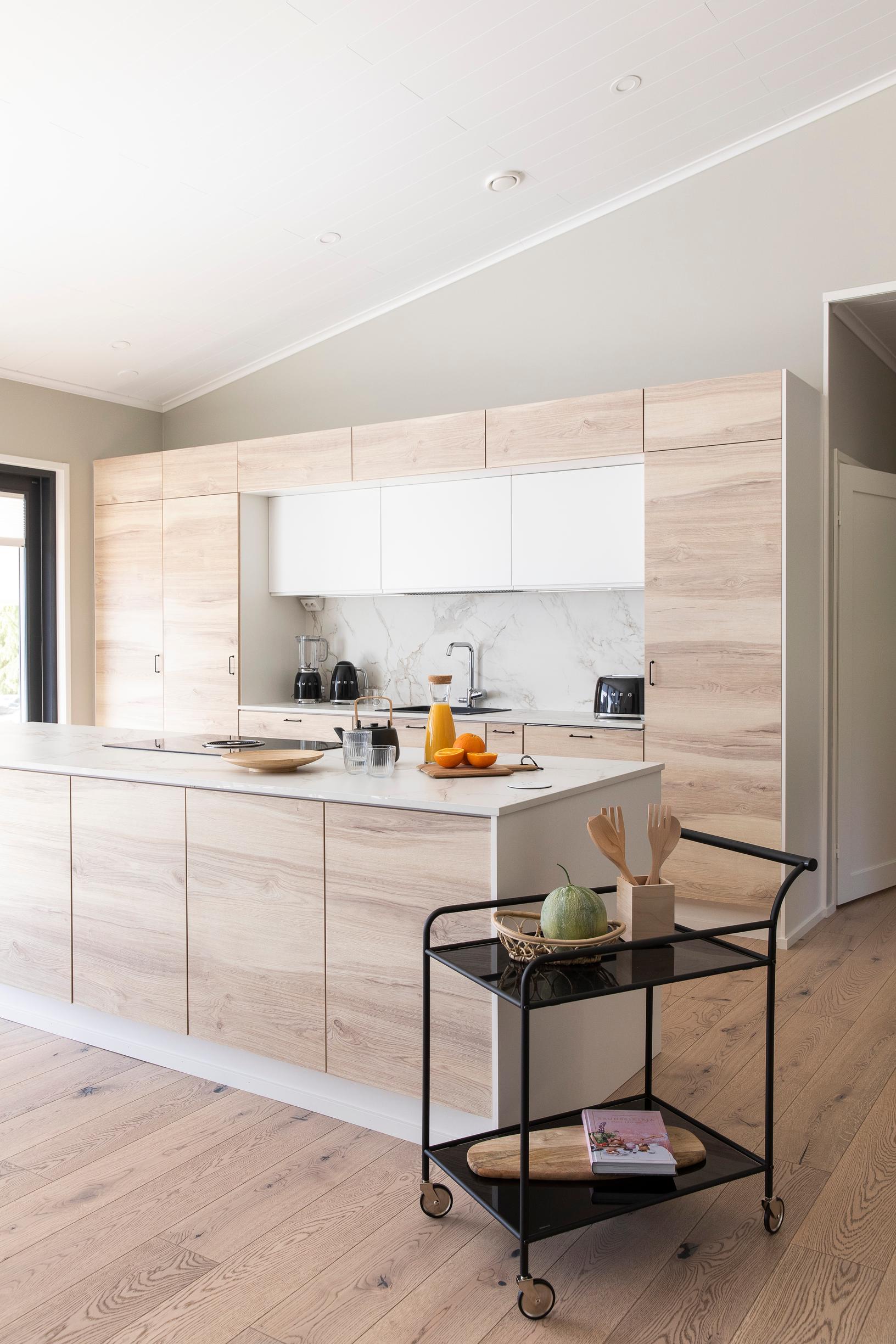
Kitchen lighting can make or break the mood—here's our tips for successful choises
A thoughtfully planned kitchen lighting design offers a brilliant setting for home cooks, highlights beautiful surfaces, and makes the space more welcoming. With our tips, you can plan lighting that suits your needs and make your vision a reality.
Kitchen lighting is crucial to a functional space, so investing in a thorough plan as well as the right lamps and fixtures is worth it. In the home’s busiest room, you need glare-free, high-quality light.
Kitchen lighting—the basics
- In a well-lit kitchen, you’ll likely have various types of light with different levels of power and quality: good general lighting, bright, glare-free cooking light, and lighting with a comfortable color temperature for dining.
- Additionally, mood lighting is important, since many people spend a lot of time in the kitchen. It’s especially key if the kitchen is connected to other rooms.
- It’s always smart to plan your kitchen lighting so it can be adjusted and dimmed for different purposes.
- Your kitchen’s style and size greatly influence how much general lighting you need. A large, open-concept kitchen usually requires many more ceiling-mounted fixtures than a compact 15-square-meter space. In a smaller kitchen, a single decorative fixture above the dining table can often provide sufficient general lighting, as long as it also casts some light upward.
- It’s wise to hang your dining table fixture or fixtures around 60–80 centimeters above the table to keep the light source out of diners’ direct sight.
- It’s helpful to have some lighting behind those seated at the table. Otherwise, you might appear as silhouettes to anyone seated across from you. For example, consider using wall-washer spotlights that cast light onto the wall.
Kitchen countertop lighting
High-quality fluorescent fixtures that provide even lighting can still be useful. They’re technologically well-understood and reliable, though there are still few compact fluorescent fixtures on the market.
Even though some less energy-efficient halogen bulbs have been removed from the market and others are being phased out, there are still plenty of good alternatives.
LED strips are becoming the most popular choice for kitchen countertops. Since they’re so compact, they’re often more convenient to install under wall cabinets than fluorescent fixtures.
Be mindful when choosing LED strips. They provide even, pleasant task lighting in the kitchen only if the LEDs are dense enough—about every 5 to 10 centimeters. Low-output LEDs must be spaced closer than high-output ones.
It’s crucial that the LED beams overlap to avoid the pinpoint effect typical of LEDs. The strip should also include a diffuser or an anti-glare shield.
The color temperature of kitchen lighting
As temperature increases, a flame’s color goes from yellow to nearly colorless, then becomes increasingly blue. This is the origin of the term color temperature. The measurement unit is kelvin (K), used in scientific and technical temperature measuring.
In everyday life, though, we see this concept of warmth in reverse. The lower the color temperature, the warmer the light seems. Yellowish light is perceived as “warm,” while bluish light is seen as “cool.”
- Color temperatures for light sources typically range from about 2700K to 6500K. A “warm-toned” incandescent bulb has a color temperature of 2700K, while bright daylight (or a daylight bulb) is roughly 5500K. Fluorescent, halogen, and LED fixtures come in a variety of color temperatures.
- Food looks appealing if the color rendering index (CRI) is at least 90. Cool tones combined with a low CRI can make dishes look dull.
- Color temperature and color rendering also have a big impact on how we perceive the overall color palette of a space. For example, the warm tone of wood stands out more if the light source is also warm in color. Lighter surfaces look their best (and even brighter) under whiter light, such as 4000K.
Lighting and preventing glare
When installing a light source under a kitchen wall cabinet, make sure it’s hidden behind a tall enough trim.
The countertop material also matters for lighting. Glossy surfaces may be challenging. Even if the light is fairly even, the pinpoint effect of LEDs or the continuous line of a fluorescent tube reflect off a glossy surface unless the fixture includes an opal diffuser to soften the light.
Ideas for kitchen lighting
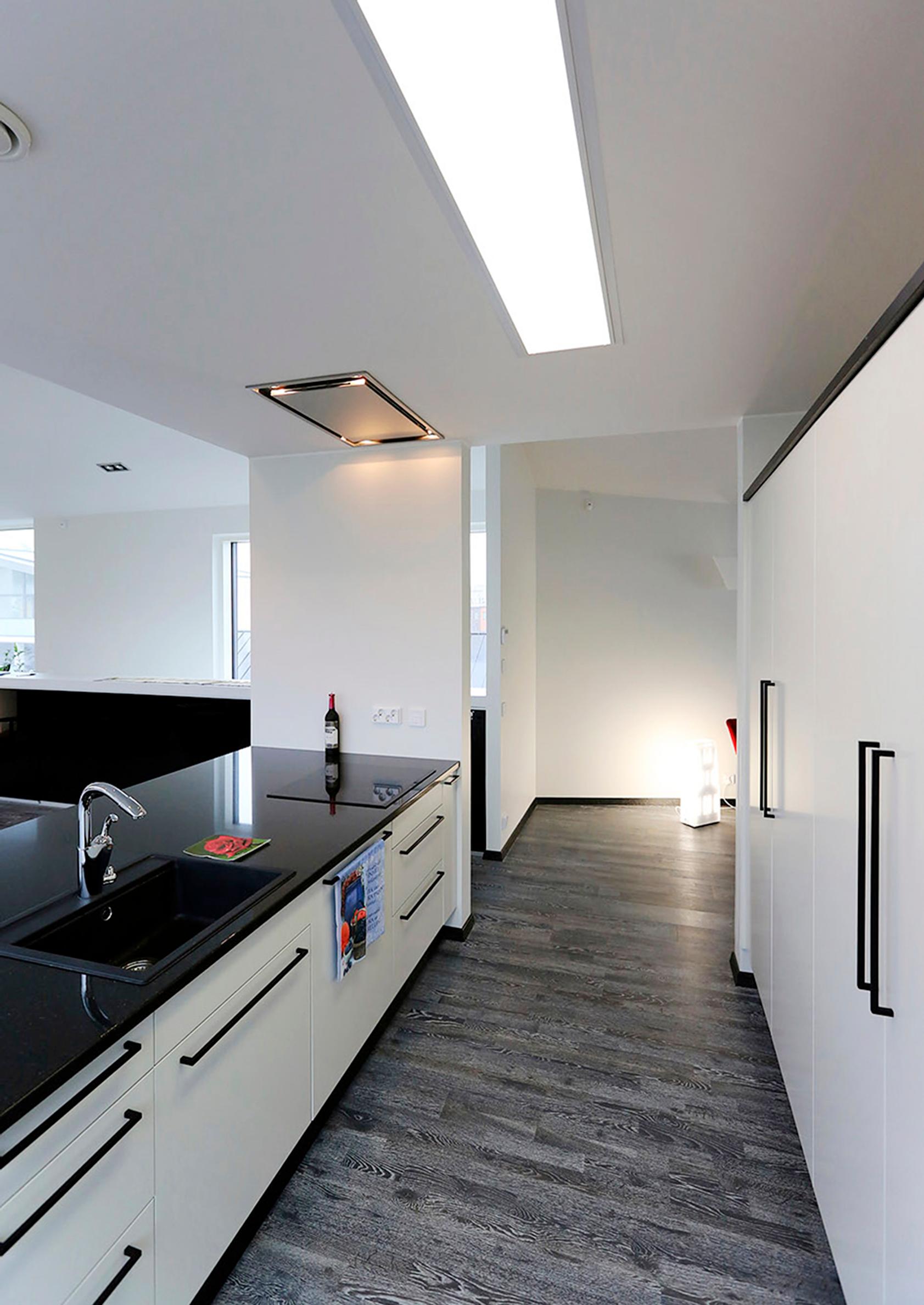
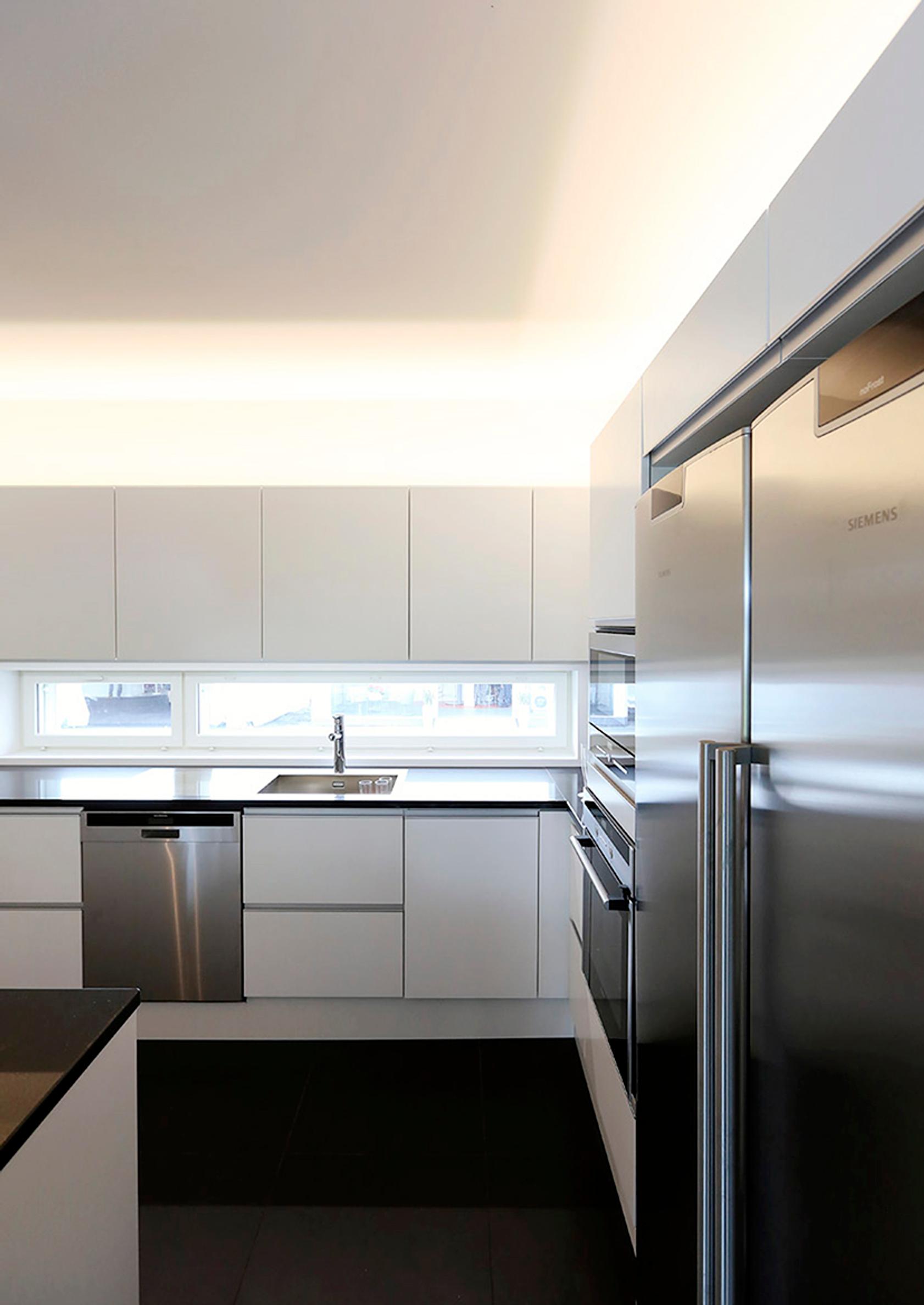
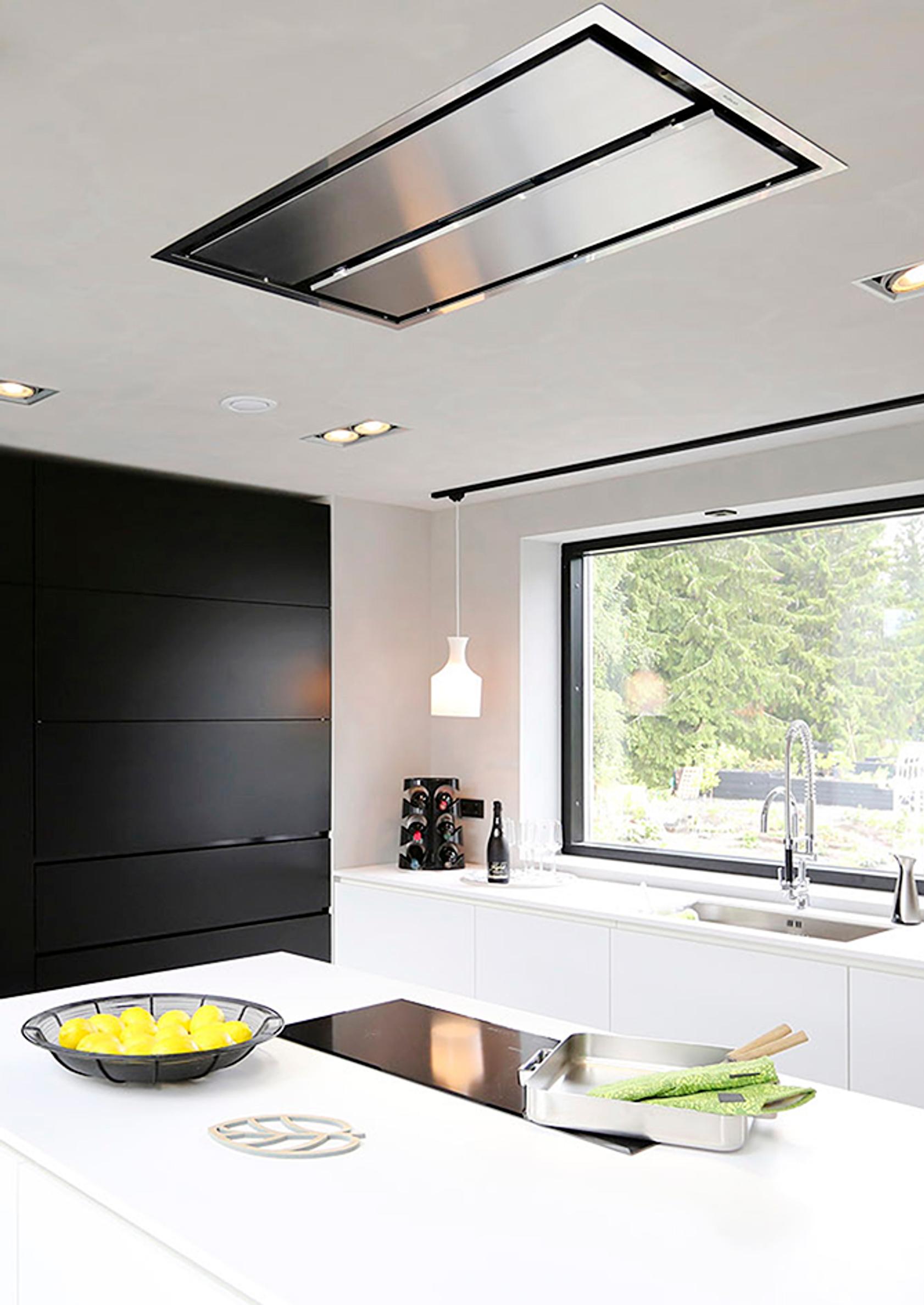
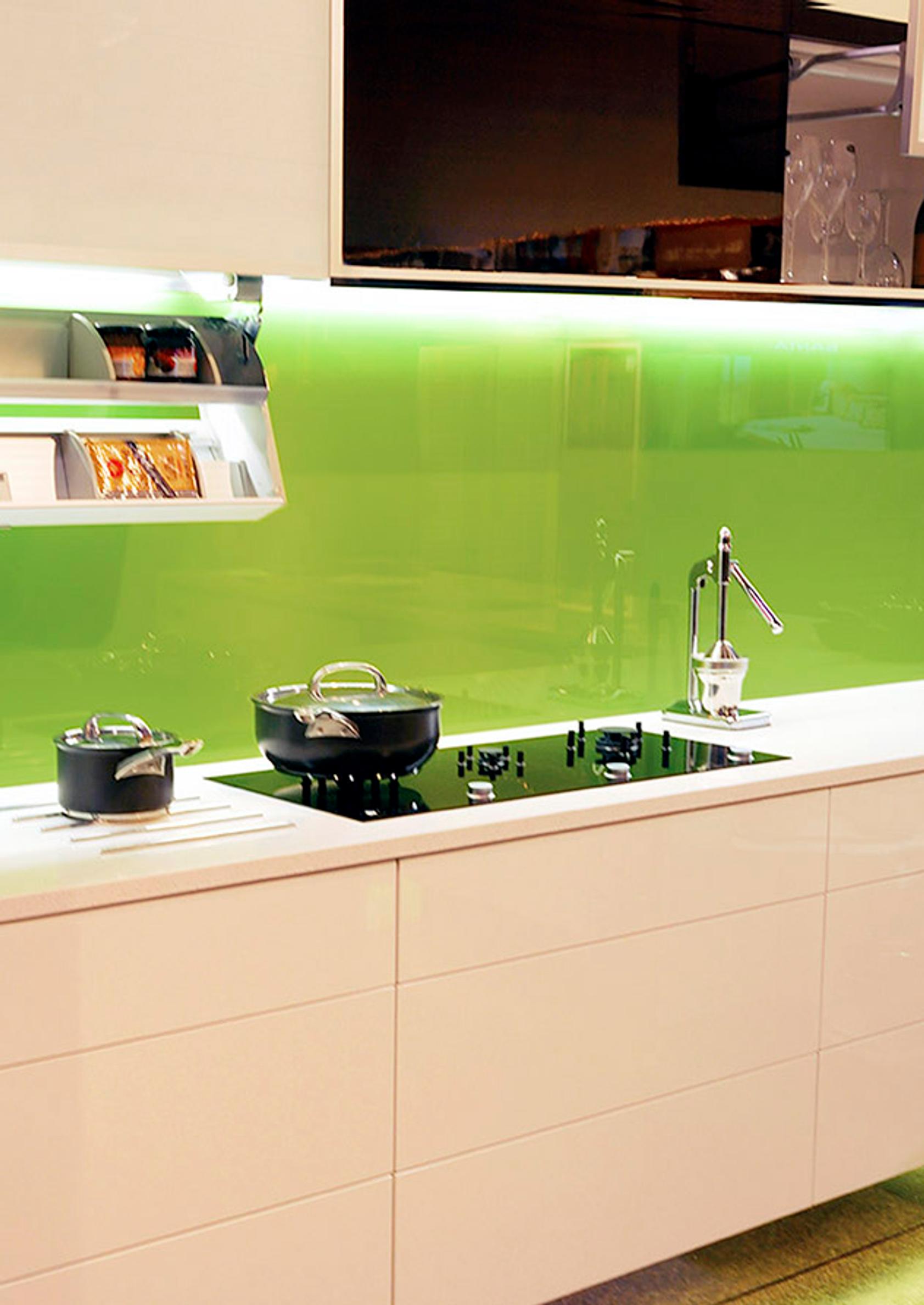

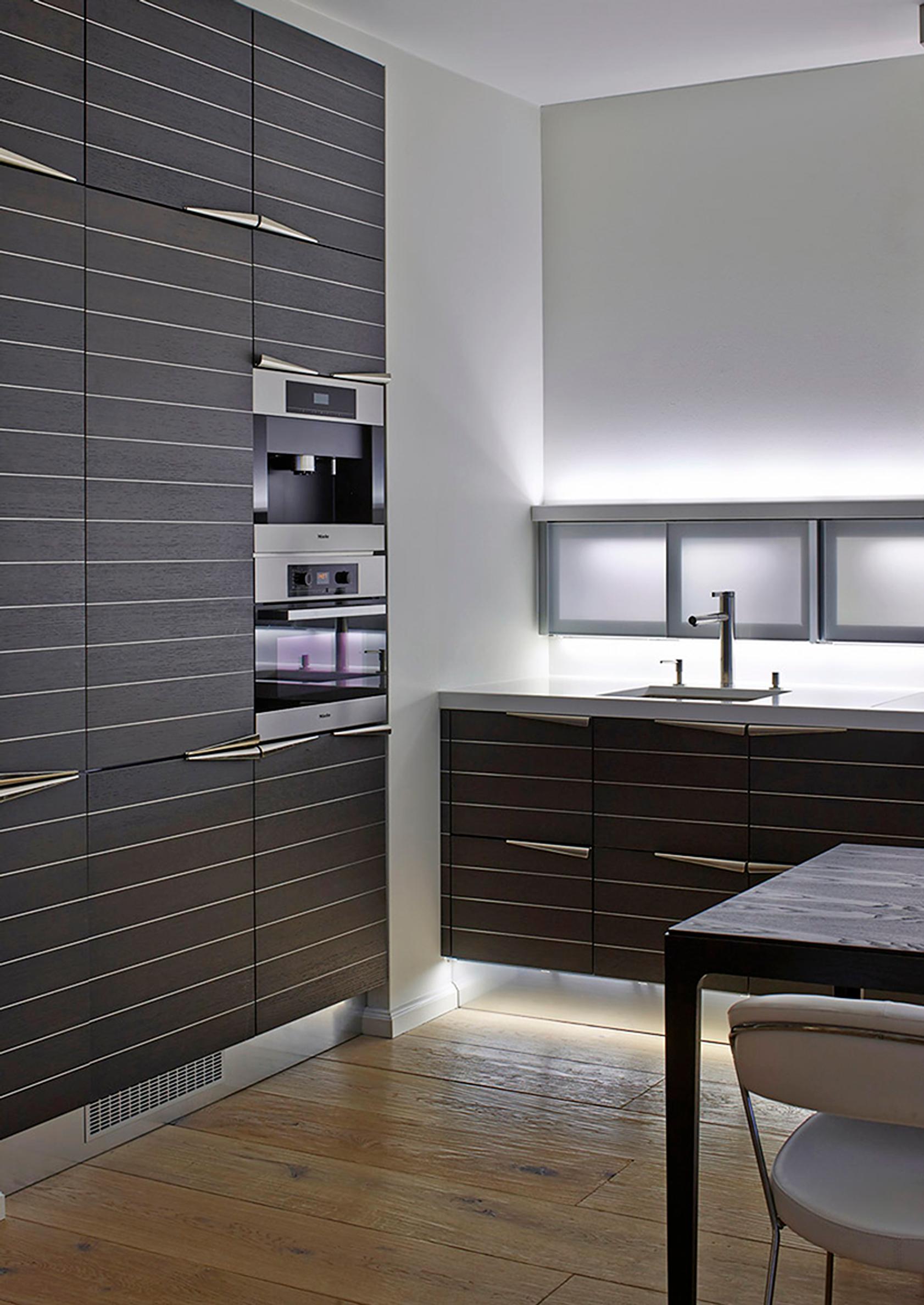
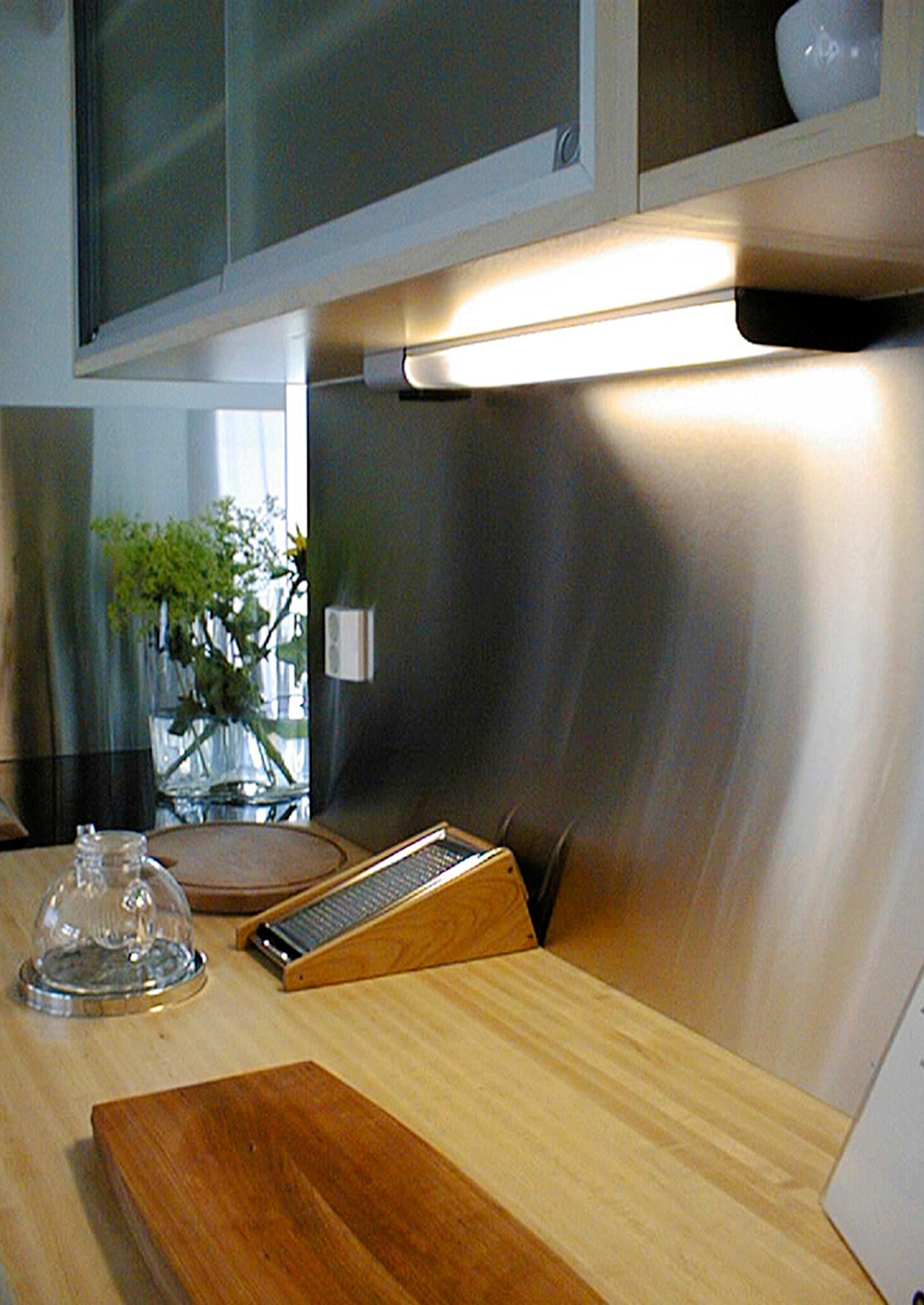
Expert: lighting designer Ari Peltola


